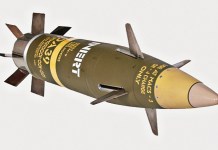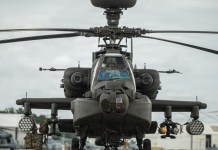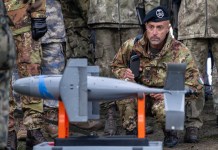US defense contractor Raytheon has successfully tested the world’s first artificial intelligence (AI)-based radiation warning receiver (RWR) for fourth-generation fighter aircraft.
The parent company, RTX, announced the development in a press release, emphasizing that the new technology is designed to enhance crew survivability and accelerate the deployment of AI capabilities in defense systems.
At the core of this breakthrough is the Cognitive Algorithm Deployment System (CADS), which integrates AI into Raytheon’s legacy air defense systems.
CADS utilizes an embedded GPU alongside Deepwave Digital’s computing framework to employ cognitive techniques for real-time threat detection, identification, and prioritization.
Raytheon tested the CADS hardware and cognitive radar data processing capabilities on a company-owned flight test aircraft before conducting further demonstrations on an F-16 fighter jet at the National Guard Test Site near Tucson, Arizona, in December 2024.
The system successfully performed these tests and demonstrated its ability to quickly process data and execute third-party algorithms with minimal latency.
CADS is expected to be procured for use on various military platforms in early 2025. However, negotiations between Raytheon and the US Air Force regarding procurement are still ongoing, and factors such as budget constraints could impact the acquisition timeline.
“The advantages of AI in defense systems are extensive, and our recent CADS test demonstrates how commercially available products, paired with advanced algorithms and cognitive methods, can help the US and its allies outpace peer threats,” said Bryan Rosselli, president of Advanced Products and Solutions at Raytheon.
Rosselli added, “CADS’ ability to quickly process data and run third-party algorithms that prioritize threats, with almost no latency, will significantly enhance survivability for military personnel.”
In an earlier related development, the US military continues to modernize its electronic warfare capabilities. At the end of November 2024, an F-16 fighter jet from the 85th Squadron completed its first flight with the new AN/ALQ-257 Integrated Viper Electronic Warfare Suite (IVEWS), developed by Northrop Grumman.
This next-generation system is designed to replace outdated electronic warfare technology on fighter jets, featuring a digital radar warning receiver, an advanced processor, and powerful transmitters optimized for the F-16’s operational requirements.
With an ultra-wideband architecture, IVEWS can detect, identify, and counter modern radio frequency threats, including those from millimeter-wave radars.
Raytheon’s CADS Advances AI-Driven Electronic Warfare
Raytheon’s Cognitive Algorithm Deployment System (CADS) is a major leap toward cognitive electronic warfare, a capability that allows aircraft to detect and counter evolving radar threats in real-time.
Modern adversaries, including Russia, are deploying reprogrammable digital radars that can rapidly change their signals. This makes it harder for traditional radar warning systems— which rely on preloaded threat databases—to recognize and respond to them.
CADS addresses this challenge by integrating AI-powered processing, which enables aircraft to analyze threats dynamically instead of depending on pre-set intelligence.
Built with miniaturized hardware and optimized software, CADS is designed to fit directly into Raytheon’s existing ALR-69A Radar Warning Receiver (RWR), which is already deployed on over 600 aircraft across the US and allied forces.
This includes the C-130 transport, KC-46 tanker, and F-16 fighter jet, all fourth-generation platforms that lack the stealth and advanced computing power of newer fifth-generation jets like the F-35. By integrating CADS, these legacy aircraft gain enhanced survivability without requiring extensive modifications.

Michael Baladjanian, Raytheon’s vice president of electronic warfare systems, emphasized CADS’ plug-and-play design, which allows it to be integrated into various aircraft with minimal adjustments. The system can support multiple radar-processing algorithms, making it highly adaptable to different operational needs.
Raytheon has already tested CADS-enhanced ALR-69A units in flight, running three radar-analyzing algorithms—one developed in-house, another from Georgia Tech, and a third from Vadum, a defense technology firm based in North Carolina.
These algorithms were seamlessly integrated in under a day, and the system was successfully flight-tested on Raytheon’s test aircraft and an Air National Guard F-16.
Raytheon is already planning future enhancements, including AI-driven capabilities that go beyond passive detection.
The ultimate goal is to evolve CADS from analyzing threats to actively countering enemy radar signals in real-time, a major advancement in electronic warfare. Currently, military aircraft rely on Mission Data Files, which require preloaded threat intelligence before each flight.
If an unfamiliar radar signal is encountered, it must be recorded and sent for ground-based analysis, a process that can take days or even months before countermeasures are developed.
A fully cognitive electronic warfare system powered by AI could eliminate these delays by instantly analyzing and responding to unknown threats in mid-flight.
Although CADS is not yet capable of full real-time electronic attack, its AI-powered adaptability is an important step toward the future of autonomous electronic warfare, helping the US and its allies stay ahead of emerging threats.
- Contact the author at ashishmichel(at)gmail.com
- Follow EurAsian Times on Google News




